What’s the Dish: Dacha 46’s Pelmeni
In this edition of What’s the Dish, Jessica and Trina Quinn of Dacha 46 share the story of the pelmeni on their menu.
During the midst of the pandemic, Trina Quinn and their wife Jessica started Dacha 46, an Eastern-European pop-up, out of their home kitchen in Brooklyn. “It started as a response to Covid, but has survived because of our love and passion for what we’ve created,” Jessica says. The first Dacha 46 menu was posted directly to their Instagram with a note to send a DM to reserve an order to be picked up in Bed-Stuy. It had two options: pork and onion stuffed pelmeni, and a slice of apple rye cake. By week two, the menu had grown to five items, with two varieties of pelmeni, vareniki, an upside down cake and challah.
It’s been one year since that first menu was posted, and while Dacha 46 continues to be a two-person operation, it has grown far beyond the first time they invited customers to pick up food from their kitchen. Today, they’re looking to sign a lease on a commercial kitchen to allow them to continue to expand, and have turned to Kickstarter to ask for support in raising capital. Although they’ve brought Dacha 46 as a pop-up to venues across New York, including Black Cat Wines and Ursula, and have offered a takeaway brunch called Banya Brunch in Prospect Heights, they have larger goals in their sights. “We want to be able to do more collaborations, chef tastings, intimate dinners, and events,” Jessica says.
The food at Dacha 46 draws from Jessica’s Ukrainian, Latvian and Jewish heritage, and comes to life through Trina and Jessica’s extensive experience working in restaurants. The name Dacha 46 draws from that same Eastern European heritage, with a dacha being the term for a second or summer home that is commonly found in Eastern Europe, and 1946 being the year Jessica’s mother, Esfira, was born. “We’ve taken a commonly underrepresented and misrepresented cuisine and are breathing new life into making it fresher, brighter and more relatable without losing our identity,” says Jessica. “We’re very proud of our background and having the ability to share this culture and cuisine with more people.”
But Jessica’s relationship to her heritage hasn’t always been the way it is today. “Being queer within the Eastern European Jewish community is something that’s always evolving for me,” she says. “When I was younger, I used to rebel against being Eastern European because I felt like there wasn’t a place for someone like me.” Jessica says that for a time, she turned her back on that heritage and it was Trina who was integral in helping shift that perspective, even though she didn’t grow up in that community.
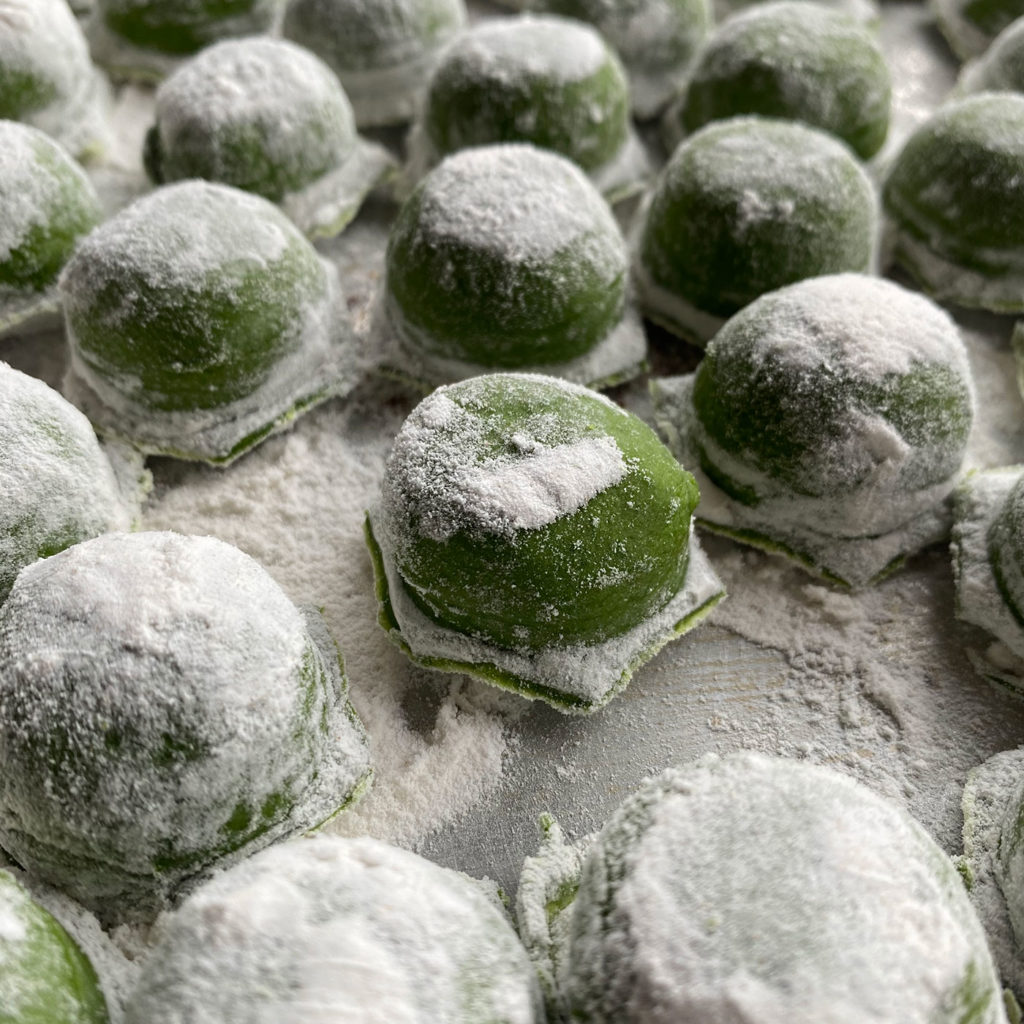
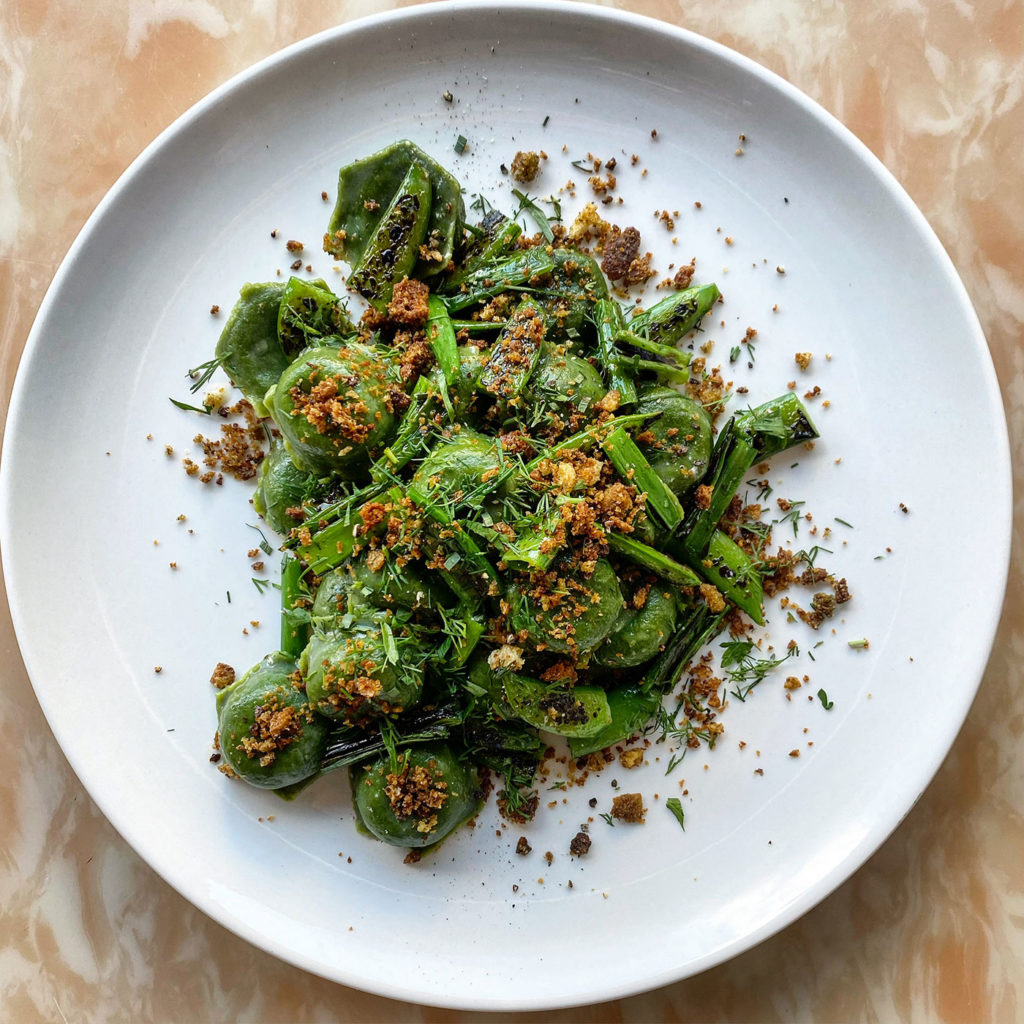
“She showed me that we could create our own community and our own traditions while still feeling tethered to my history and culture,” Jessica says. “It’s one of the many things I love about Dacha 46. It’s almost been cathartic and healing to get to revisit what it means to be Eastern European Jewish through a different lens. One where we get to make the rules and set the boundaries.”
For this installment of What’s the Dish, we spoke with Trina and Jessica Quinn about a dish that has been a part of Dacha 46 since their first menu: pelmeni.
What’s the dish called? When was it added to the menu?
The dish is called pelmeni. It is the first dish we put on our menu when we started in October of 2020.
Why is this dish important to your restaurant?
This dish is truly the heart and soul of Dacha 46. It’s the first dish we debuted on our menu and it’s the dish that really created our following of loyal guests. Pelmeni are such an integral dish in Eastern Europe and to many hold very special memories of childhood, of family, and their roots. Being able to create our own version of that and be part of peoples’ new memories is an indescribable feeling.
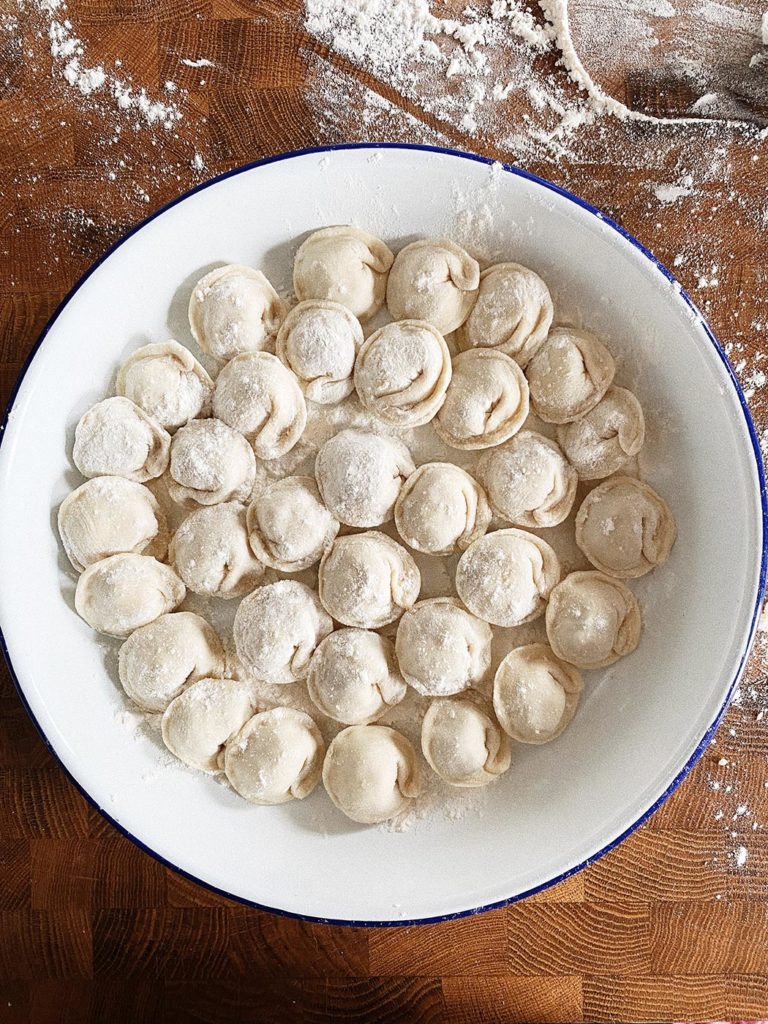
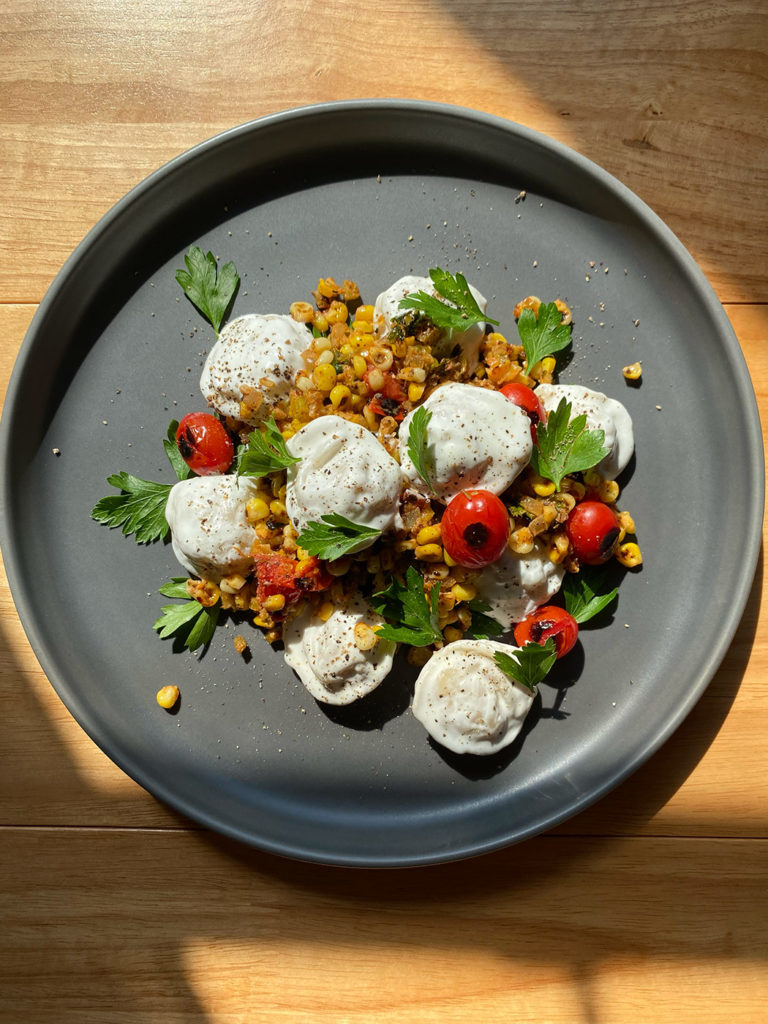
What are its ingredients? How is the dish prepared?
Pelmeni are dumplings commonly eaten across all of Eastern Europe. The dough is prepared very simply with flour, milk, water, eggs and salt. The filling changes often, but is typically made with ground meat, such as veal or pork (we love our ground chicken version), minced onion and pepper. The onion adds a juiciness to the filling that makes it so irresistible. The dough is kneaded until it’s elastic and smooth, and the filling is rolled into little meatballs. We use a pelmenitsa—pelmeni mold—to form the dumplings, which are then frozen. We boil them, and the most traditional way to eat them is with smetana, butter and dill.
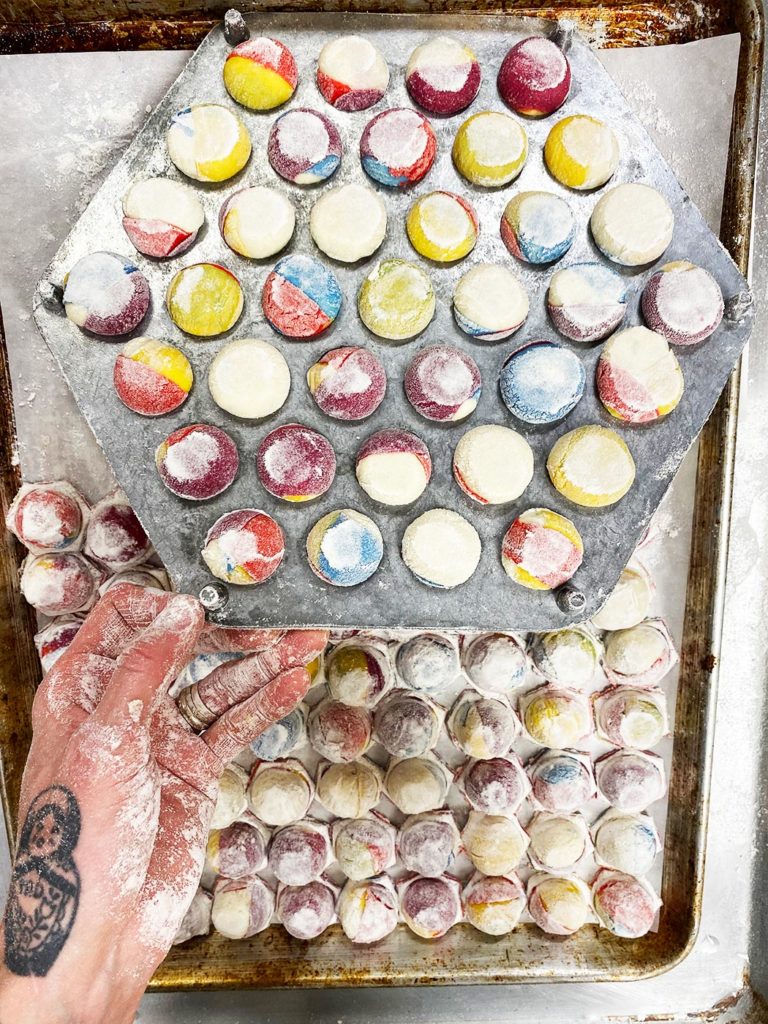
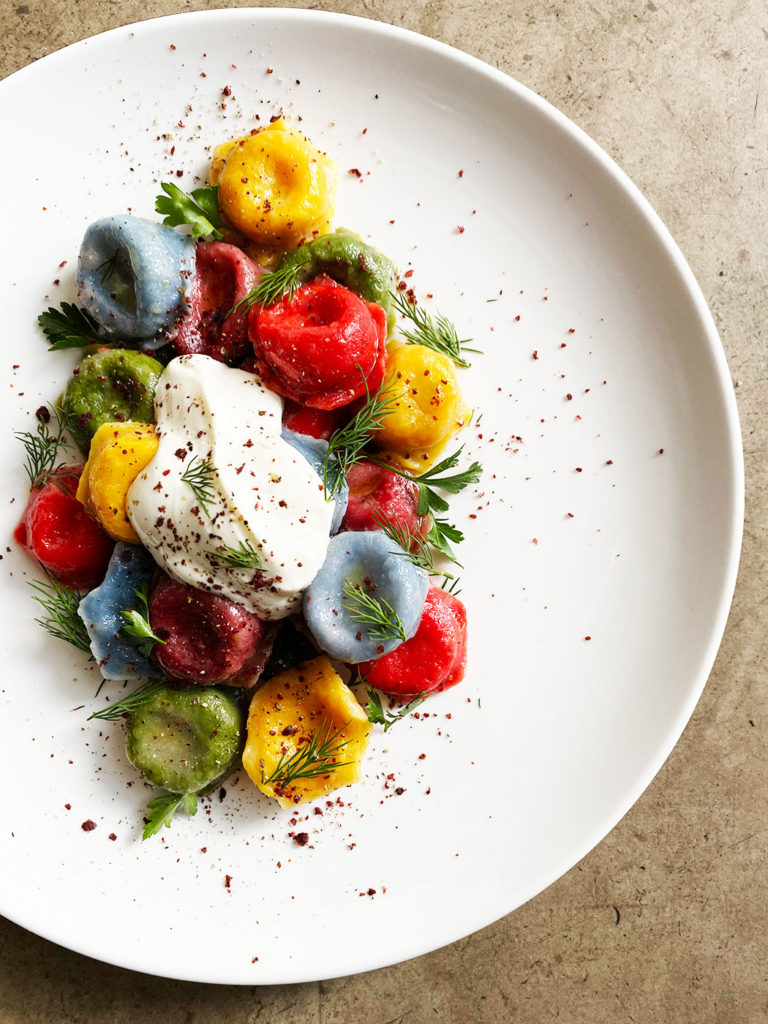
Where do you source the ingredients in this dish from? What can you tell us about who sells you these items?
We source all of our meat from Butcher Girls. It’s a mom-and-mom butcher shop owned by Erika Nakamura and Jocelyn Guest. We’ve been buying all of our meat from them since we created Dacha 46, and it’s something that makes us feel really good knowing we’re supporting a really great small business created by really good people and knowing that our meat is being sourced ethically and responsibly.
What was the concept or inspiration behind creating this dish? Has this dish evolved from its original concept?
This dish stemmed from my childhood and memories, but it’s something that’s evolved through Trina’s experience. Trina didn’t grow up entrenched in the culture, so watching her play, create and evolve a dish that holds such a special place for so many people—myself included—is incredible. She’s done a rainbow dough for Pride using all sorts of natural dyes. She’s made a verdant green dough with dill that tastes like what you think the color green would taste like. We’ve also created a vegetarian version filled with our khachapuri filling made of feta, goat cheese, mozzarella and ricotta. It’s really become our staple dish, but also our chameleon.
Photos courtesy of Dacha 46.






Our comments section is for members only.
Join today to gain exclusive access.